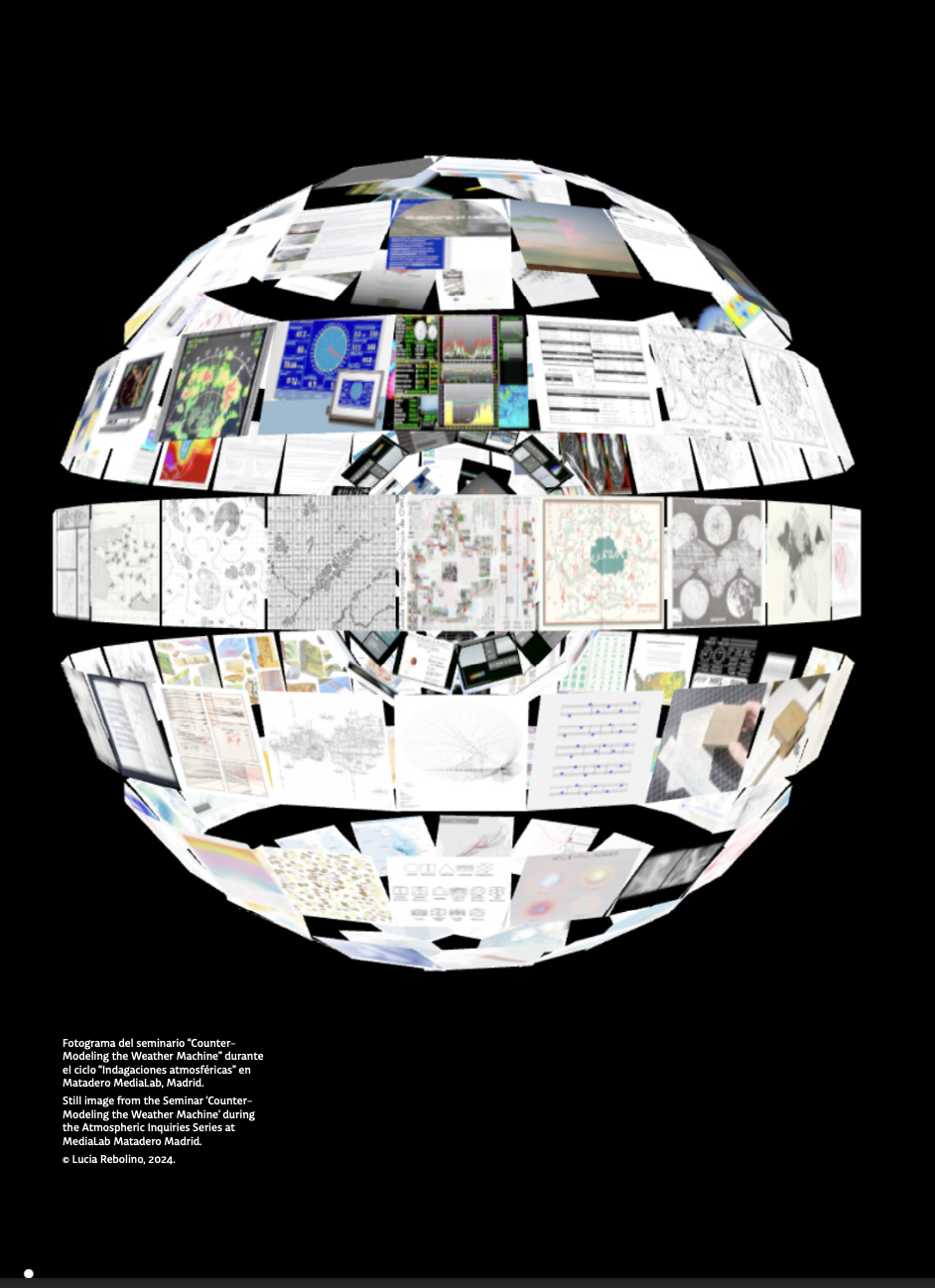Contramodelando la máquina meteorológica
Barra lateral del artículo

Palabras clave:
Contenido principal del artículo
Resumen
En un contexto crítico de crisis climática y cuestionamiento de las narrativas científicas, este ensayo reimagina la modelación climática a través de la estética digital, las contraprácticas y el pensamiento arquitectónico. Explora las tecnologías utilizadas para realizar pronósticos, desde los primeros métodos numéricos hasta las nuevas formas sintéticas de inteligencia, destacando las tensiones entre los avances computacionales y la imprevisibilidad del clima. Basándose en la arquitectura como herramienta de razonamiento espacial y crítica sistémica, propone un nuevo marco crítico para experimentar con prácticas alternativas de modelación ante condiciones inciertas. Al desplegar los modelos científicos tradicionales, el ensayo también revela las narrativas políticas y ecológicas ocultas que se encuentran integradas en las infraestructuras de predicción y control.
Detalles del artículo

Esta obra está bajo una licencia internacional Creative Commons Atribución-NoComercial 4.0.
Materia Arquitectura proporciona acceso inmediato y gratuito a todos los contenidos de esta edición electrónica, publicada simultáneamente con la edición impresa. Materia Arquitectura no cobra honorarios a los autores por ningún concepto.
Todos los contenidos de esta edición electrónica se distribuyen bajo licencia Creative Commons de “Atribución-Copartirigual 4.0 Internacional” (CC-BY-SA).
La licencia Creative Commons permite el acceso libre e inmediato al contenido y permite que cualquier usuario lea, descargue, copie, distribuya, imprima, busque o genere enlaces a los textos completos de los artículos, permitiendo también que estos puedan ser rastreados para indexarlos, pasarlos como datos a software o usarlos para cualquier otro propósito legal. Asimismo, la licencia otorga derechos de uso a quienes a su vez utilicen una licencia abierta (Creative Commons o equivalente).
Los derechos de los textos y las imágenes publicadas pertenecen a sus autores, quienes otorgan a Materia Arquitectura la licencia para su uso. La gestión de los permisos y la autorización de publicación de las imágenes (o de cualquier material) que contenga derechos de autor y sus consecuentes derechos de reproducción en esta publicación es de exclusiva responsabilidad de los autores de los artículos.
Toda vez que mencionen su origen, los autores son libres de distribuir sus artículos por otros medios. Cualquier reproducción total o parcial del material deberá citar su procedencia.
Descargas
Citas
Amoore, L. (2020). Cloud Ethics: Algorithms and the Attributes of Ourselves and Others. Duke University Press.
Benish, S. E., Reid, G. H., Deshpande, A., Ravan, S., & Lamb, R. (2020). The Impact of Emerging 5G Technology on U.S. Weather Prediction. Journal of Science Policy & Governance, 17(2). https://doi.org/10.38126/JSPG170203
Blum, A. (2019). The Weather Machine: How We See Into the Future. Bodley Head.
Bratton, B. H. (2016). The Stack: On Software and Sovereignty. MIT Press.
Bridle, J. (2018). New Dark Age: Technology and the End of the Future. Verso.
Coen, D. R. (2018). Climate in Motion: Science, Empire, and the Problem of Scale. University of Chicago Press.
Daston, L. (2016). Cloud Physiognomy. Representations, 135, 45–71.
Easterling, K. (2014). Extrastatecraft: The Power of Infrastructure Space. Verso.
Edwards, P. N. (2010). A Vast Machine: Computer Models, Climate Data, and the Politics of Global Warming. MIT Press.
Edwards, P. N., Bowker, G., Jackson, S., & Williams, R. (2009). Introduction: An Agenda for Infrastructure Studies. Journal of the Association for Information Systems, 10(5). https://doi.org/10.17705/1jais.00200
Fuller, M., & Weizman, E. (2021). Investigative Aesthetics: Conflicts and Commons in the Politics of Truth. Verso.
Grier, D. A. (2005). When Computers Were Human. Princeton University Press.
Griffiths, C. (2023). Unmodelled: In the Blindspot of AI Infrastructure. Gradient Journal. https://gradient-journal.net/articles/unmodelled-in-the-blindspot-of-ai-infrastructure
Haraway, D. J. (1988). Situated Knowledges: The Science Question in Feminism and the Privilege of Partial Perspective. Feminist Studies, 14(3), Article 3. https://doi.org/10.2307/3178066
Latour, B. (2017). Facing Gaia: Eight Lectures on the New Climatic Regime (C. Porter, Trans.). Polity.
MacCormack, P. (2020). The Ahuman Manifesto: Activism for the End of the Anthropocene. Bloomsbury.
Mattern, S. (2023). Modeling Doubt: A Speculative Syllabus. Journal of Visual Culture, 22(2), 125–145. https://doi.org/10.1177/14704129231184553
Parks, L. (2018). Rethinking Media Coverage: Vertical Mediation and the War on Terror. Routledge.
Peters, J. D. (2015). The Marvelous Clouds: Toward a Philosophy of Elemental Media. University of Chicago Press.
Richardson, L. F. (1922). Weather Prediction by Numerical Process. Cambridge University Press.
Rockmore, D. (2024, January 15). How Much of the World Is it Possible to Model? The New Yorker. https://www.newyorker.com/culture/annals-of-inquiry/how-much-of-the-world-is-it-possible-to-model
Russell, L. (2020). Glitch Feminism: A Manifesto. Verso.
Wiener, N. (1948). Cybernetics Or Control and Communication in the Animal and the Machine. Hermann & Cie.
Wilson, G. F. (1999). Meteorology: A History of Weather and Climate. Routledge.